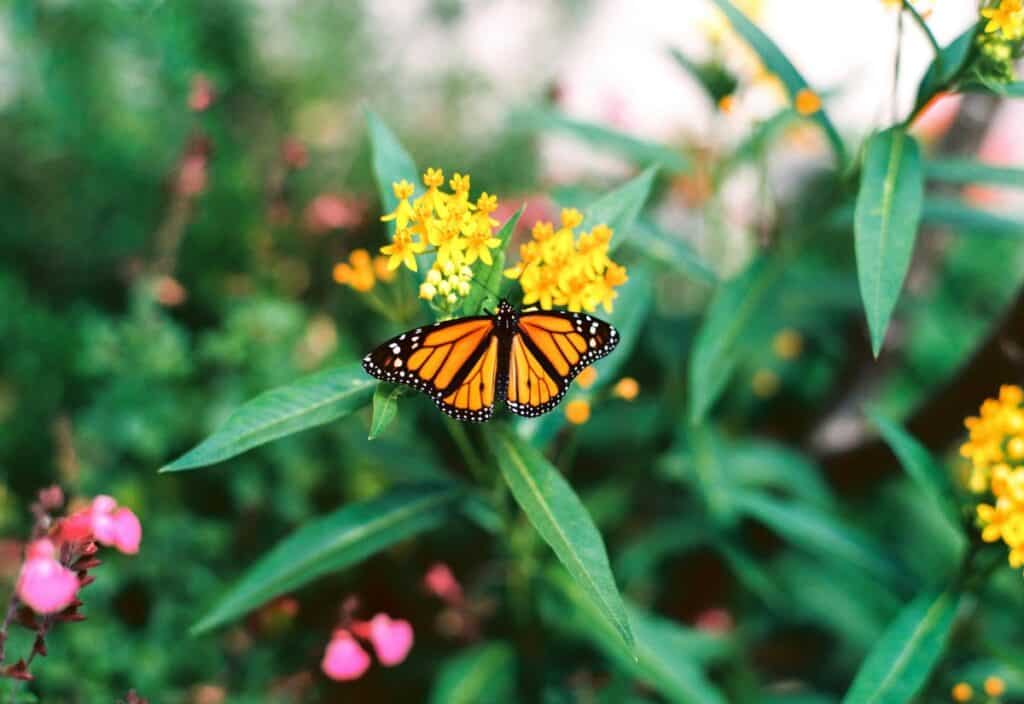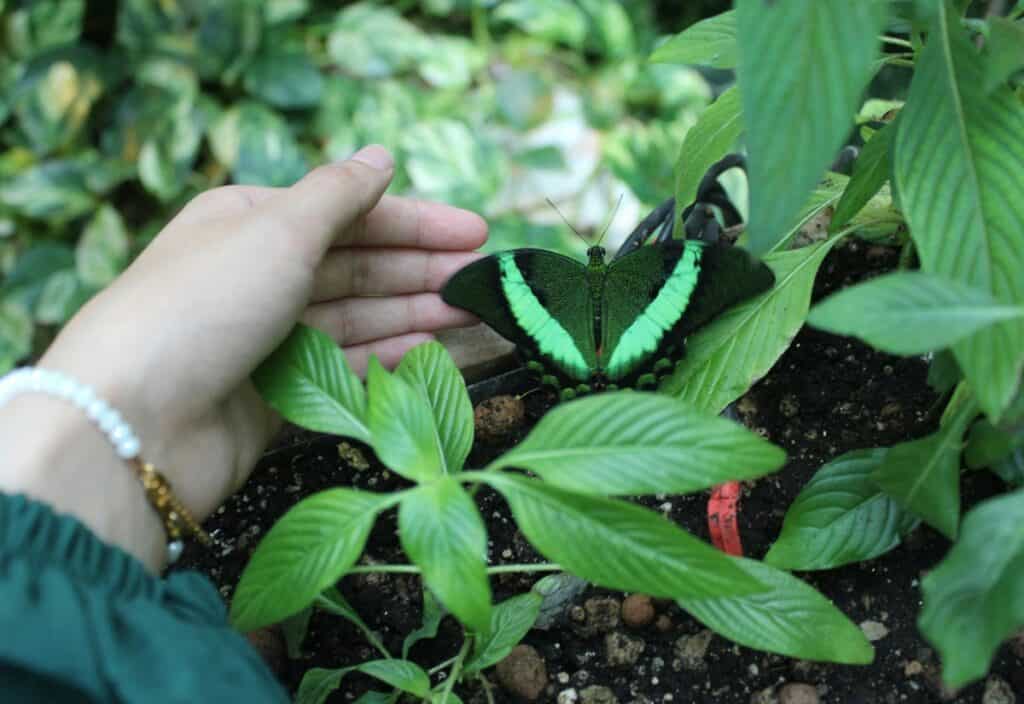There is nothing quite like sitting in nature, surrounded by beautiful blooms and butterflies. Creating a pollinator-friendly yard that is welcoming to butterflies, bees and even hummingbirds is fairly easy to do, with a little planning.

Why create a pollinator-friendly yard?
If you have a garden, you will want to invite bees, butterflies and other pollinators to your yard to help with pollination. They are a critical piece to a successful garden.
Inviting these beautiful creatures to your yard does more than just give you sights to enjoy. It also helps to counter the widespread destruction of their habitats by land development and pesticides.

How do you create a yard that attracts butterflies and bees?
Here are some practical steps to transform your outdoor space into a haven for pollinators.
1. Create a native plant garden
Native plants are best suited for local pollinators as they have co-evolved. These plant species provide the kind of nectar, pollen and habitat that native bees and other pollinators need.
“My mother is a master gardener so she instilled in me the importance of planting native species. I try to buy flowers from local nurseries only. Also, I never use chemicals and instead rely on composted food scraps to enrich my soil.”
— Leah Ingram, Southern Maine on the Cheap
2. Provide a variety of flower shapes and colors
Different pollinators are attracted to different flower shapes and colors. By planting a variety, you can attract a diverse group of pollinators.
Tubular flowers are good for hummingbirds and butterflies. Flat or shallow flowers are suitable for bees.
3. Create a habitat
Pollinators need more than just food, they need places to live and reproduce.
Allow part of your yard to grow naturally without mowing or disturbing it. Leaf litter, a mulch layer, wood chips, or even layers of newspaper can provide a refuge for pollinators.
Nesting sites can be made by providing materials like bee or hummingbird houses.
4. Avoid pesticides
Pesticides can be harmful to pollinators. Opt for natural pest control methods and practices such as introducing beneficial insects to control pests, neem oil, insecticidal soaps, and other organic methods that don’t harm pollinators.
5. Provide water sources
Pollinators need water to drink and cool down. Place shallow dishes of water with stones in them so pollinators can land and drink safely. Keep bird baths clean and filled with fresh water.
6. Incorporate pollinator pathways
Link your garden with other green spaces to create corridors that pollinators can travel through safely.
Work with neighbors to create continuous, pollinator-friendly spaces. Advocate for community gardens and green spaces in urban areas.

What if I don’t have enough room for a garden?
If you live in an apartment or a house with a small yard, consider potted plants on a balcony, container gardens or planter boxes.
Or consider starting a community garden full of native grasses, nectar plants and a mix of plants that the butterflies and honey bees will love! Some people also plant a new garden bed in their front yard, filled with pollinator-friendly plants. Who says every house needs a lawn?
Do monarch butterflies need milkweed?
Milkweed is a primary habitat not only for monarch butterflies — monarch caterpillars’ diets consists solely of milkweed. Furthermore, adult monarchs will only lay their eggs on milkweed plants. So really, nothing else will do and we need to make sure there is plenty of milkweed along the migration path for our monarch butterfly friends.
Tips for a successful pollinator-friendly yard
Here are our top tips for creating a pollinator-friendly yard.
- Plant colorful nectar flowers
- Include native plants because they grow well in the areas where they’re local
- Add milkweed for monarch butterflies
- Make sure it gets lots of sunlight. A sunny garden will help your plants grow.
- No pesticide use
- No chemical fertilizers
- Plant small hedges or shrubs for hiding from the cold wind
- Hang a hummingbird house and bee house
What are some pollinator-friendly plants?
Research which plants are good for your growing zone. Pollinator friendly perennials include bee balm, echinacea, black-eyed Susan, lavender and salvia.
If you like to change up your yard every year, some annuals that are well loved by our flying friends are zinnias, sunflowers, marigolds and cosmos.
Don’t forget about the shrubs, either. Spirea and butterfly bush both feature pretty flowers.
You can add these herbs to your garden to attract bees and butterflies. Thyme, basil and mint are great options.
Vines such as honeysuckle and clematis are well loved and grow well. And if you want to invest in a few trees for the pollinators, fruit trees and redbud trees are great choices.
“We have planted several varieties of native plants in our garden to attract more pollinators, but our favorite is native butterflyweed! This plant attracts the most pollinators to our garden each summer. As an added bonus, it is quite pretty, and puts on vibrant orange flowers!”
— Michelle Goth, blackberrybabe.com
By following these steps, you can create a vibrant, pollinator-friendly yard and garden that supports the health of your local ecosystem. Not only will you be providing essential resources for pollinators, but you’ll also enjoy the beauty and activity they bring to your outdoor space. Now sit back and watch the pollinators in your garden
Gena Lazcano is the creator, writer and recipe creator at Ginger Casa. She loves her air fryer and pressure cooker and loves creating new recipes to share. She is also a self-proclaimed houseplant expert and a lover of all things garden related. She and her husband live with their three sons in East Texas.
This article originally appeared on Ginger Casa.